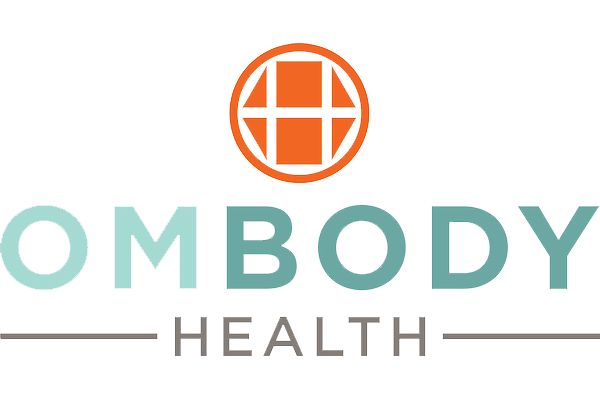More and more employers are recognizing their responsibility and stake in the wellbeing of their people, not just because healthier people cost them less, but because organizations that prioritize wellbeing are both more productive and likable. And because many employers care about and value their employees. Below are 5 ways that any company, regardless of size and budget, can foster cultural norms that make it easier for their employees to be healthy at work.
5 Ways to Impact Workplace Wellbeing and Culture
1. Implement a Healthy Catering Policy
If you do not already have one, chances are office meals often turn into pizza parties. A Catering Policy, sometimes called a Nutrition Policy, can seem threatening and off-putting to some, so it is important remind leaders, managers and employees that its purpose is to ensure that healthy options be available for those who are making an effort to eat better. Make sure your Healthy Catering Policy focuses on inclusion of healthy food, not exclusion of unhealthy food.
For Example: As part of [company’s] effort to ensure to that our workplace fosters and does not hinder employee wellbeing, and is supportive to those making an effort to eat healthier, we commit to adhere to the following guidelines when providing food for company meetings and functions:
- Offer at least one vegetarian and/or vegan option.
- Offer at least one gluten free option.
- When lunch/full meal is being provided, always offer a salad.
- When snacks are being provided, always provide a healthy snack option, such as fresh vegetables, fruit, and/or nuts or low sugar/high fiber granola bars (such as Kind Bars).
- When dessert is being provided, always offer fresh fruit.
- When beverages are being provided, always offer filtered water. When available, sugar-free sparkling water will also be provided as a substitute for soda.
2. Keep Healthy Snacks Out in the Open
Is healthy eating still taboo at your workplace? There is extensive research on the impacts of sugar and processed foods on mental focus, energy levels, weight gain and long-term health, but these are the foods that seem to be most accessible and socially acceptable at workplaces.
We all know that co-worker who has a fully stocked candy bowl on their desk, or who is always bringing in freshly baked treats. How often have you reached for sweets in a moment of stress or procrastination simply because they were there, only to regret it later on? I know I have! Which is why I do not keep these things in my home or office. While I don’t recommend banishing sweets and processed food all together, there are ways to create an environment that is more supportive to making healthy choices.
- Have a freshly stocked fruit bowl somewhere readily accessible. If your company has a Wellness Committee, designate a healthy snack budget and person who wants to take on the role of stocking the fruit bowl. If there is resistance, the role can be rotated monthly.
- Our Employee Wellness Interest Surveys suggest that people DO NOT want access to sweets at work all of the time, and many clients have even expressed frustration that sweets and unhealthy food are so accessible at their workplaces. Some employee-driven committees may choose to designate just one day of the week as “sweet day” and ask that their co-workers abstain from bringing shareable sweets on other days. If there is resistance, make sure you honor it and come up with a plan that works well for your co-workers. Maybe each department sets their own protocol around this. Maybe you pre-frame it as an experiment, try it for one month, and then take a poll on how people are liking the new norm.
3. Lead Stretch Breaks
Designate a health-conscious employee to lead a simple 5-minute stretching sequence in the mid-morning or mid-afternoon, such as this one. You can even gift employees with resistance bands or yoga straps to make simple shoulder and chest opening stretches more accessible. Support more people in taking healthy breaks by encouraging leaders and managers to participate in stretch breaks and model how they prioritize their wellbeing at work.
4. Designate a Wellness Room
Many companies are turning spare offices into Wellness Rooms equipped with yoga mats, blocks, straps, dumbbells, a blood pressure monitor, an exercise ball, a comfortable chair and/or cushion for relaxation, etc. Work with employees to find out what supplies would best support them at work. Again, the goal is to make staying healthy at work more accessible. By creating a private space for employees to go stretch, breath or meditate, they will feel more comfortable integrating these important practices into their workday.
5. Establish Clear Email Guidelines
Email is a tool that has transformed how we do business. As with any tool, when it is not used properly it hinders our ability to get the job done. The proper way to use email is to “pick it up”, much like we do our mail. However, in many office environments it has become normal for employees to be on email whenever they are at their desk. Eek! This not only hinders productivity but can trigger unhealthy stress levels and impact emotional wellbeing.
We know that multi-tasking is not as productive as single-tasking, and that when we are constantly breaking our focus on bigger picture projects to check email, we thwart our ability to move our organizations forward. There may be some employees that need to be on email for most of their workday—namely the ones that are processing orders and handling the day-to-day operations—but whenever possible, managers, team leaders and employees should be encouraged to establish a schedule for checking their email twice and eventually one time per day. People should also be encouraged to be discerning when they use the CC and Reply All features to avoid bombarding the wrong people with distracting emails.
If this is happening in your company, identify which individuals/roles do not need to reply heavily on email and work with these people to create boundaries on how often they check, respond to, and are copied on emails. Autoresponders can be helpful in letting people know when you will get back to them or pointing them in the right direction. Here are a couple autoresponse templates by Tim Ferriss I have found useful.
Final Thoughts
In some cases, day-to-day operations that inhibit employees from staying hydrated, attending onsite wellness events, or moving during their workday may need to be addressed. While this can seem like a big project, and may be, the outcomes of making these changes will far outweigh the costs.
The first step to addressing operational or cultural barriers to employee wellbeing is identifying them. An Employee Wellness Interest Survey can be a great place to start. Small focus groups with each department can also be an excellent way get to know your employees’ wellness struggles. Contact OmBody Health if you need an experienced third party to facilitate the feedback process.
As you start to identify and address the logistics and/or norms that hinder employee wellbeing, make sure to leave room for experimentation and even mistakes. Redesigning the workplace to be more conducive to individual wellbeing and productivity will not happen overnight, but in time your support of such efforts will make your organization more attractive to prospective employees and customers and a better place to work.
About the Author
Allie Andrews, M.Ed, Certified Corporate Wellness Specialist, Certified Health Coach, Certified Yoga Teacher
Allie is the Founder and Program Director at OmBody Health. In addition to coaching thought-leaders, executives and professionals to maximize their impact and quality of life, she and her team empower organizations to develop work cultures that foster employee health, happiness and full potential living.

